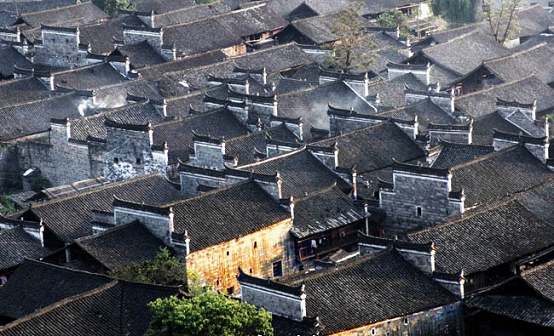Located at the western foot of Xuefeng Mountains and on the bank of Wushui River, a tributary of Yuan River, Gaoyi Village is 46 kilometers away from the county town. The village is surrounded by mountains and water with villagers living in harmony with nature. It is the home of 2,314 people in 614 households, covering an area of about 1,400 hectares, among which there are 200 hectares of rice paddies and 1,200 hectares of forests.

The village was firstly built in the Tang Dynasty (618-907), began to prosper in the Yuan Dynasty (1271-1368), and reached its heyday in the Ming (1368-1644) and Qing (1644-1912) dynasties. The core area of the village covers an area of 21 hectares, and the building area of the ancient architectural complex is 15,000 square meters. There are 75 well-preserved and fully functional ancient residential buildings, with the earliest ones constructed in the 13th year of the Hongwu reign of the Ming Dynasty (1380). The surname of 85% of the Dong villagers is Yang, and these villagers are descended from Yang Zaisi, the Marquis of Weiyuan of the Southern Song Dynasty (1127-1279). In front of each house, the Heaven-Earth-Sovereign-Parent-Teacher and the ancestral tablets are enshrined, which embodies a local custom of respecting ancestors. The village is rich in intangible cultural heritages. The Nuo Opera performed in the village originates from an ancient religious rite and is dubbed as the “living fossil of Chinese opera arts”.
Gaoyi Village is praised by many experts as the “first ancient village in the South” and “the living fossil of ancient residential buildings”. It was listed as a national key cultural relics protection unit in 2006, a national historical and cultural village in 2007, one of the first batch of Chinese traditional villages in 2012, and one of the 51 model villages for the overall protection and utilization of traditional villages in 2014.
In September 2014, Huitong County initiated a project of overall protection and utilization of the village, which was rated as a key project with a total investment of 540 million yuan by Huaihua City in 2015, to secure a balanced development of the village, integrating of culture and tourism in the process of maintaining the native ethnic identity.
(Translated by Yang Hong)
